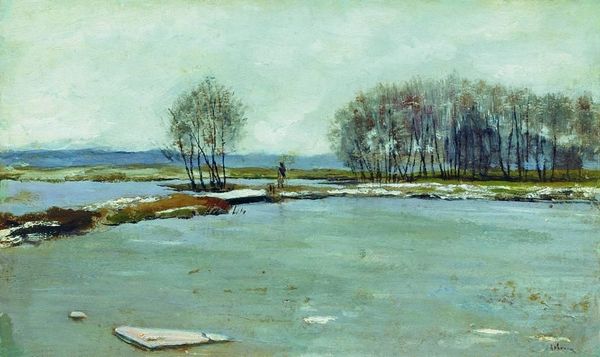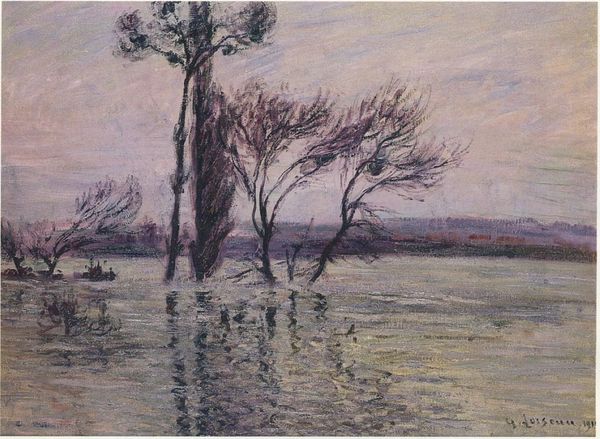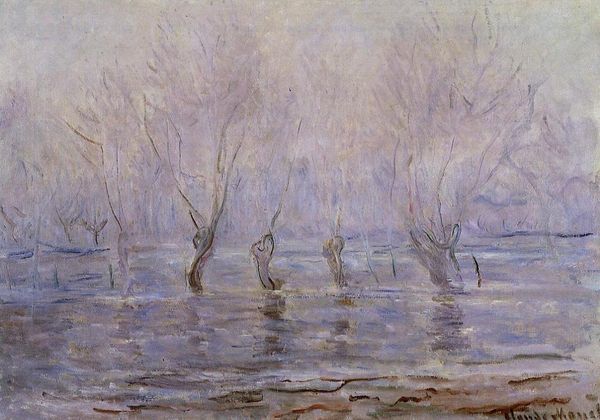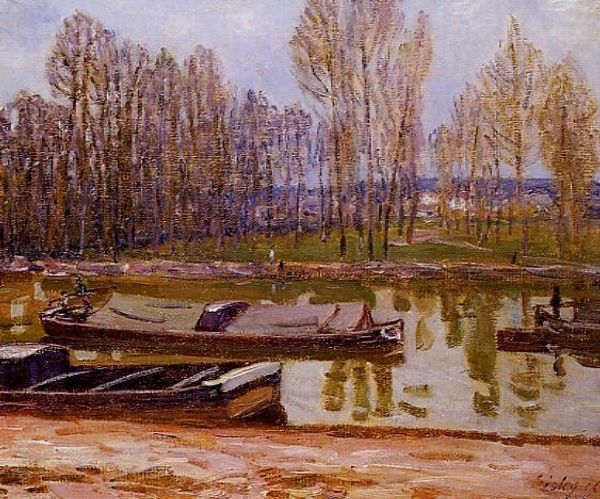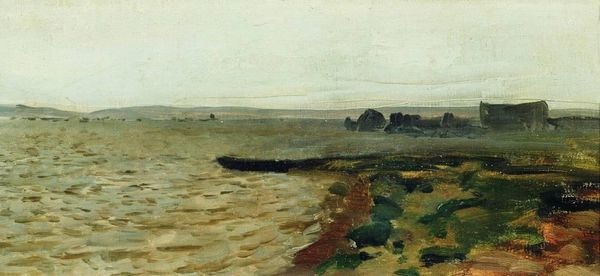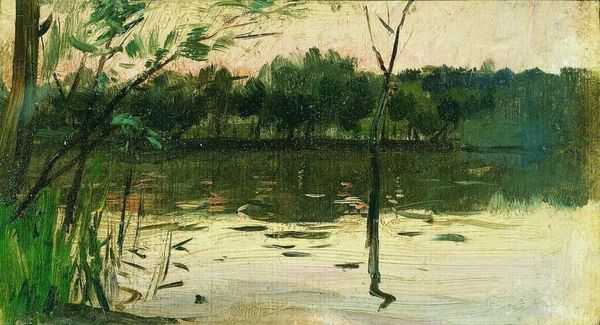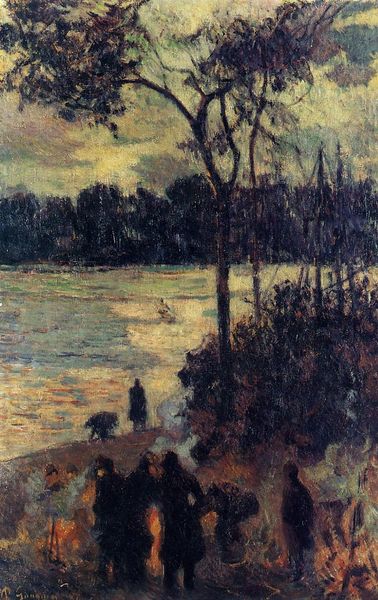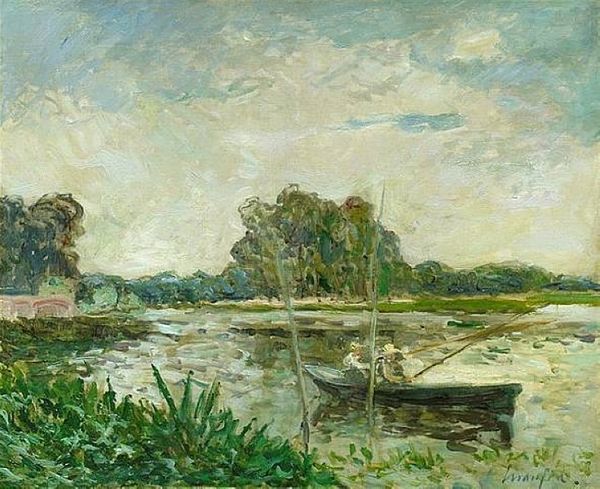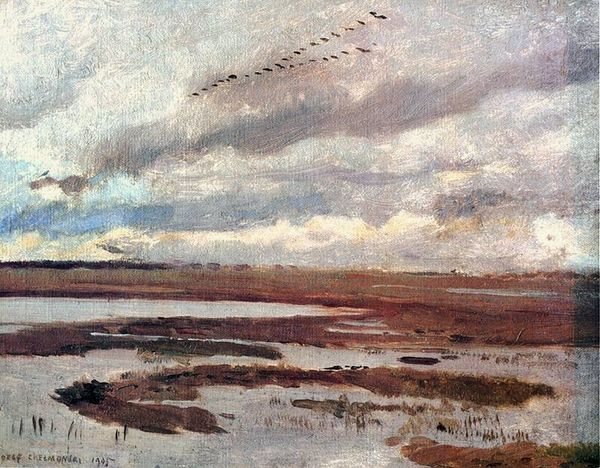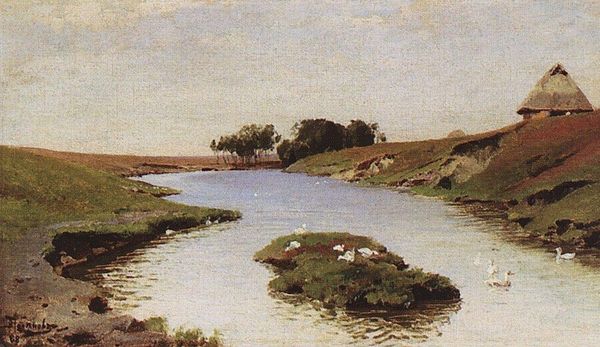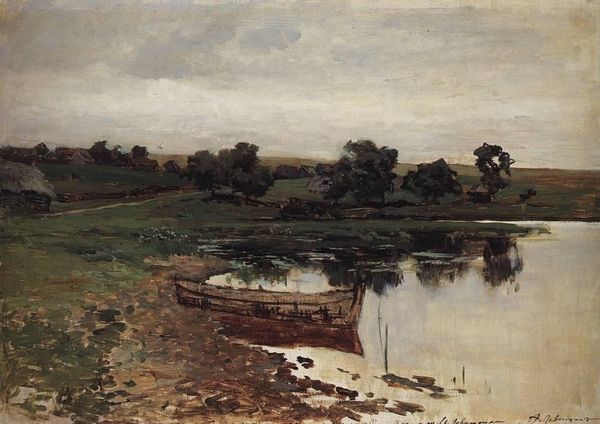
Copyright: Public domain
Editor: This is Isaac Levitan’s "High Waters," painted in 1887 using oil paints in a plein-air style. The somber hues create a melancholic atmosphere, like a world paused and holding its breath. What can you tell me about its historical context and impact? Curator: Levitan painted this during a time of significant social and political change in Russia. The late 19th century witnessed increasing industrialization, urbanization, and growing social unrest. These elements significantly impacted artists who increasingly sought to represent Russian life authentically, including the hardships of rural communities, frequently affected by floods, famine, and disease. Do you notice how Levitan’s muted palette and depiction of a landscape under duress resonate with those turbulent times? Editor: I do see the connection. So, the flood is not just water; it symbolizes a deeper sense of societal anxiety? Curator: Precisely. Moreover, consider the institutional framework of Russian art at the time. The Wanderers, a group of realist artists, were challenging the established academic style and sought to depict the lives of ordinary Russians. Levitan, although influenced by Impressionism, shared their concern with reflecting Russian reality. In what ways do you think this painting reflects or diverges from the Wanderers' core tenets? Editor: I see the emotional connection to the land but the technique seems a bit different, more focused on capturing a fleeting moment and mood than on detailed representation. It's less about social commentary and more about evoking a feeling. Curator: Exactly. This tension – between the social consciousness promoted by The Wanderers and Levitan’s personal expression – shows the evolving nature of Russian art in this period. Levitan's art created space for artists who did not share every socio-political view. It highlights a pivotal moment of burgeoning aesthetic freedom in the face of pressing social concerns. Editor: I now realize it reflects a society grappling with many difficulties by presenting raw landscapes while exploring impressionistic methods, bridging traditional subjects with modern styles. Thanks, that’s insightful. Curator: And for me, thinking about art this way is an enriching reminder that creative practices do not evolve in a bubble, but grow directly out of cultural needs.
Comments
No comments
Be the first to comment and join the conversation on the ultimate creative platform.
